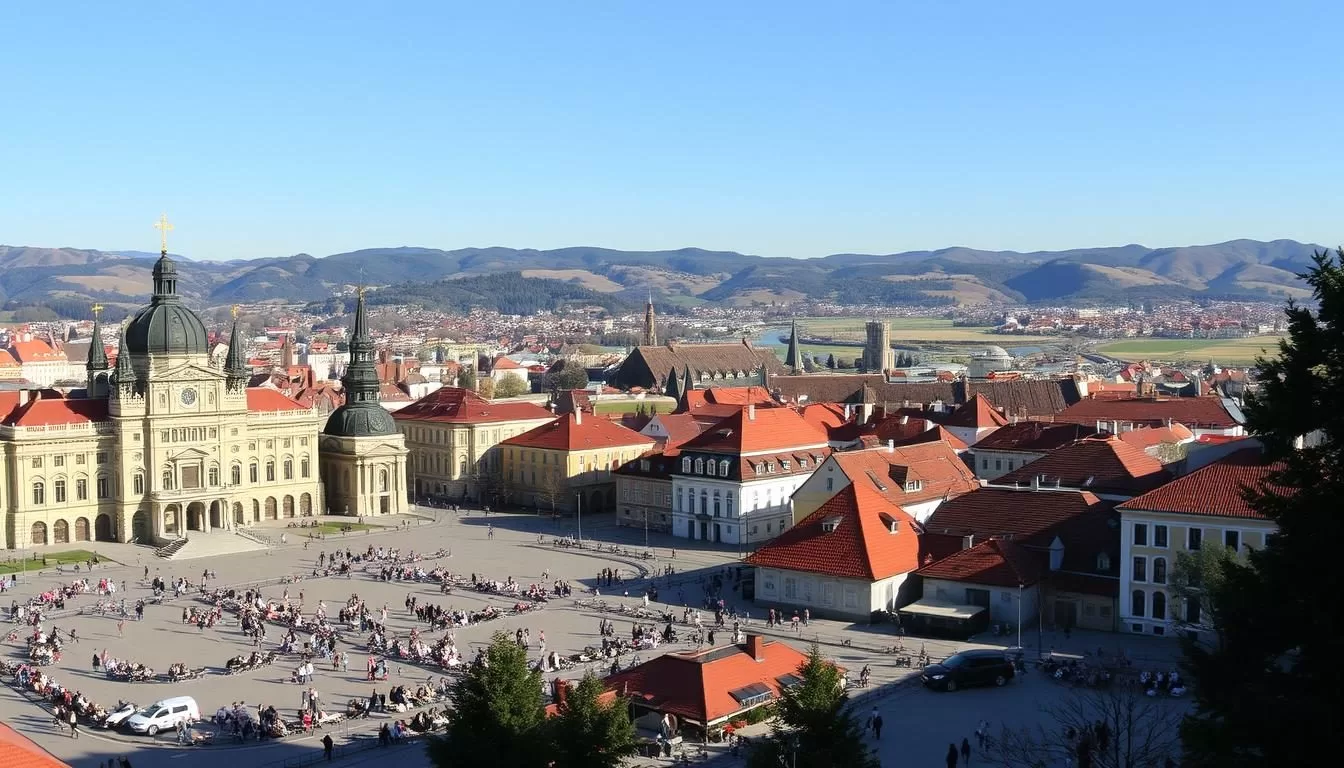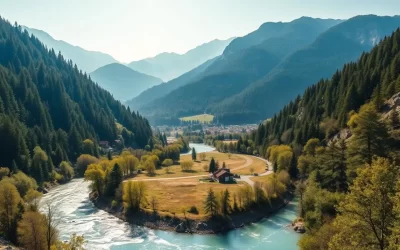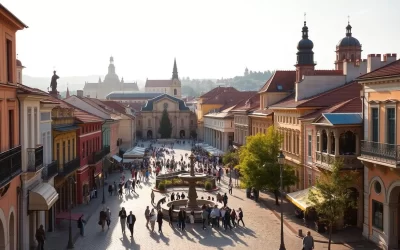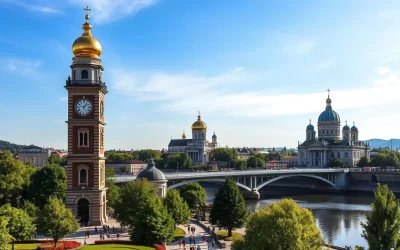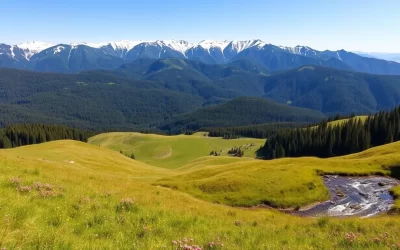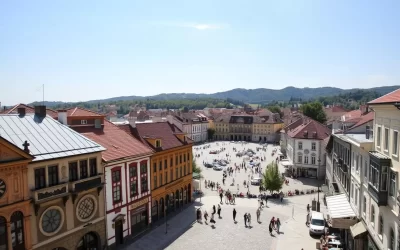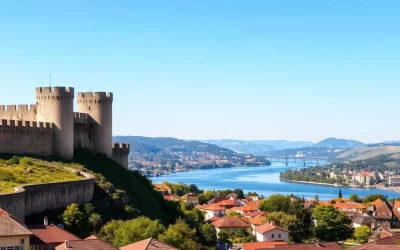When central Serbia broke away from the Ottoman Empire in 1818, Kragujevac was chosen as the reborn nation’s capital. Since then, the city in the Šumadija region has been associated with one man, Prince Miloš Obrenović.
The head of state lived in Kragujevac and ordered sophisticated buildings in the Central European style, giving the city a unique cultural heritage.
As you explore Kragujevac, you’ll discover a rich blend of history, cultural landmarks, and modern attractions that make it a compelling destination.
From solemn memorial sites to vibrant cultural venues and natural attractions, Kragujevac provides diverse experiences for all types of travelers.
Discovering Kragujevac: Serbia’s Historic First Capital
As you plan your trip to Serbia, consider visiting Kragujevac, a city steeped in history. Kragujevac is a significant place in Serbia’s past, having served as the country’s first capital.
A Brief History of Kragujevac
Kragujevac has a rich history dating back to the 19th century when it played a crucial role in Serbia’s struggle for independence. The city’s historic significance makes it an interesting area to explore, with numerous landmarks and museums showcasing its past.
How to Get to Kragujevac
If you’re planning to visit Kragujevac, you’ll find it’s easily accessible by car or public transportation. From Belgrade, take the highway to Batočina, and then continue the 25 kilometers to Kragujevac. Alternatively, you can drive via Mladenovac and Topola, enjoying the scenic views of the Šumadija region. Regular bus services are also available from Belgrade’s main bus station, making the journey straightforward.
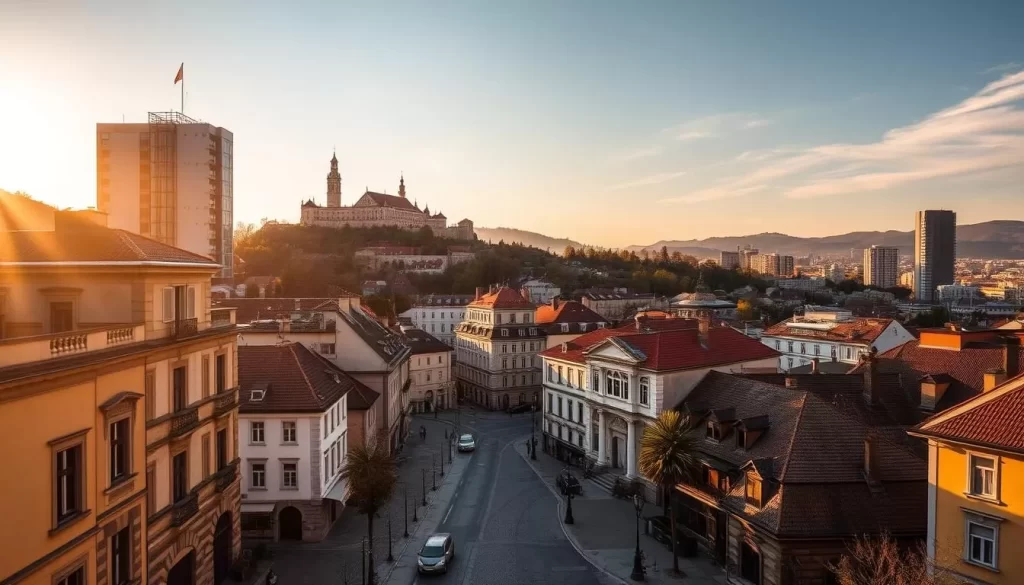
Šumarice Memorial Park: A Solemn Tribute to History
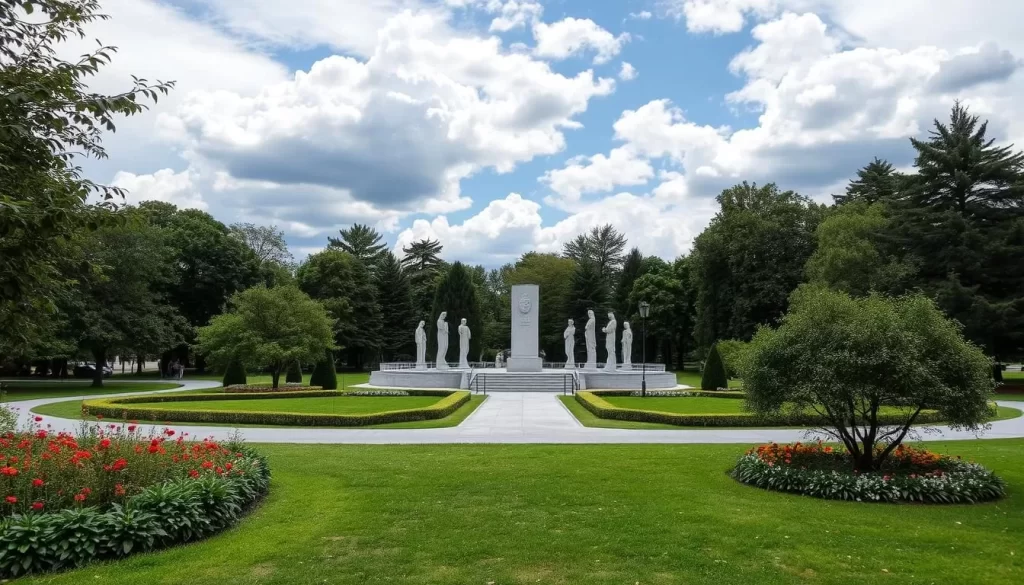
As you visit Šumarice Memorial Park, you are walking through a site of great historical significance and somber reflection. This memorial park is dedicated to the victims of the massacre that took place in October 1941, during World War II.
The Story Behind the Memorial
The site of the massacre has been left as a memorial, and in the 1960s, the renowned artist Miodrag Živković created a series of sculptures for the park. These sculptures are not just artistic expressions but also carry deep symbolic meanings related to the tragic events. You can enhance your understanding by using an audioguide available at the park entrance, which provides detailed background information on the events and the significance of each memorial.
Exploring the Monuments and Sculptures
Throughout Šumarice Memorial Park, you’ll find powerful sculptural monuments, each with its own symbolic meaning. The “V/3” monument is particularly moving as it commemorates the schoolchildren who were massacred, featuring abstract forms that evoke a profound sense of loss. Another notable sculpture is the haunting “Kameni Spavač” (Stone Sleeper), symbolizing eternal rest and the enduring memory of those lost.
The monuments are strategically placed throughout the park, creating a contemplative journey that allows visitors to process the magnitude of the tragedy while appreciating the artistic expression of grief and remembrance.
Šumarice Museum: Preserving the Memory
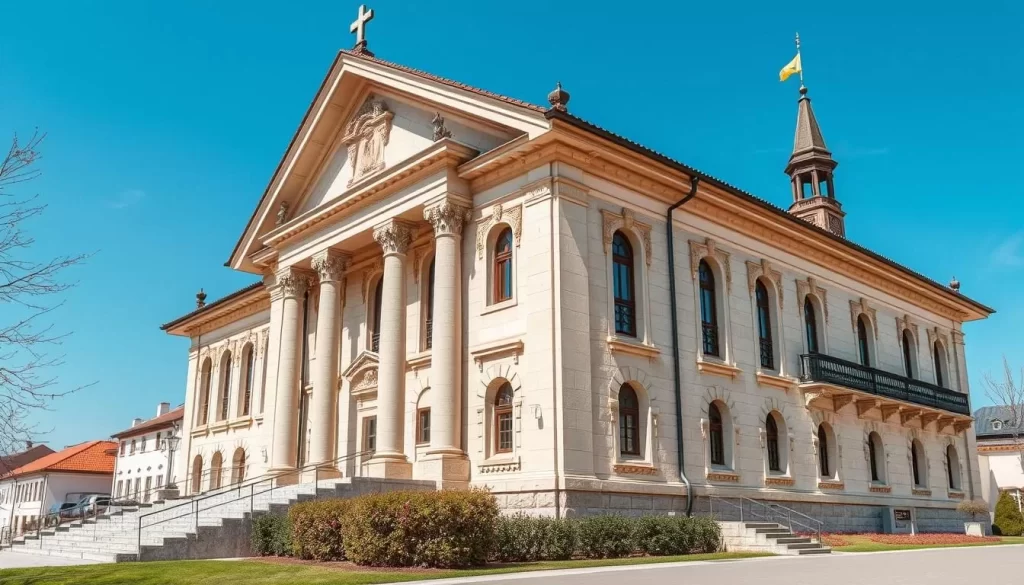
As you visit Kragujevac, a stop at the Šumarice Museum is essential to understanding the city’s history. The museum is dedicated to preserving the memory of the 1941 Kragujevac massacre, a tragic event that occurred during World War II.
The Architecture and Symbolism
The Šumarice Museum’s design is a poignant reflection of its purpose. The architecture and symbolism embedded in the museum’s structure serve as a powerful reminder of the tragic events it commemorates. The museum’s design elements work together to create a solemn atmosphere, inviting visitors to reflect on the past.
Exhibitions and Collections
The museum houses a comprehensive collection of artifacts, documents, and artistic works that tell the story of the 1941 Kragujevac massacre. You can examine historical evidence, including black and white photos, newspaper clippings, and personal documents like identity cards that belonged to the victims. The museum also features contemporary artistic responses to the massacre, with modern paintings and sculptures that interpret the events through an emotional and reflective lens. Additionally, the museum’s unique memorial concept includes rooms dedicated to each life lost, represented by thousands of backlit images that create a powerful visual testament to the scale of the tragedy.
The exhibitions provide a tangible connection to the individuals who lost their lives, sharing their stories and preserving their memory. Educational materials throughout the exhibition offer context about the German occupation, the partisan resistance, and the brutal policy of retaliation that led to the massacre, helping you understand the historical circumstances surrounding this tragic event.
Milosev Venac: The Historic Heart of Kragujevac
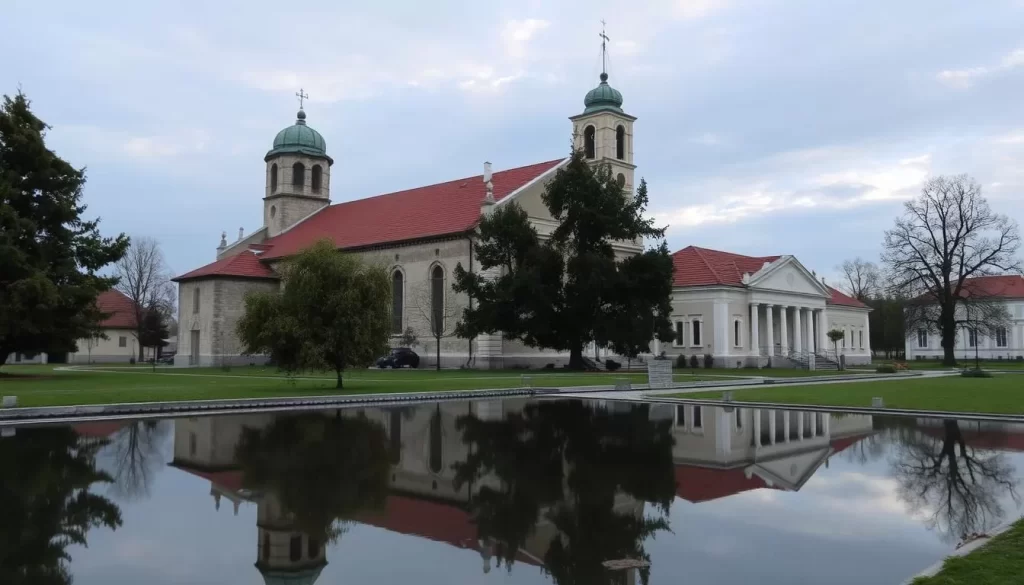
Stepping into Milosev Venac, you’re immediately immersed in the rich history of Kragujevac. This historic complex is home to several significant landmarks that played a crucial role in Serbia’s past.
Prince Miloš Obrenović’s Legacy
Prince Miloš Obrenović, a pivotal figure in Serbian history, left an enduring legacy in Kragujevac. The Old Church (Stara Crkva), built in 1818, stands as a testament to his influence. Inside the church, you can still see Prince Miloš’s original chair, adorned with the Serbian coat of arms and a small Ottoman turban engraving, symbolizing the transitional period between Ottoman rule and Serbian independence.
Notable Buildings in the Complex
The Milosev Venac complex is comprised of several notable architectural landmarks. The first Serbian Assembly building, constructed in 1859, is a significant historical site where crucial decisions were made, including the reading of the Berlin Congress statement in 1878, officially recognizing Serbia’s independence. Other notable structures include the Amidža Konak, now part of the National Museum, and Prince Mihailo’s Konak, showcasing Austrian architectural influences.
As you explore Kragujevac, visiting Milosev Venac is a must to understand the city’s historical significance. The complex not only highlights the city’s past but also its architectural evolution, making it a fascinating building to visit for history buffs and those interested in architecture.
Prince’s Arsenal and Old Foundry Museum

Kragujevac’s Prince’s Arsenal, a 19th-century industrial marvel, has been transformed into a vibrant cultural hub. This historic complex is now home to the Old Foundry Museum, offering a glimpse into the city’s industrial heritage.
The Industrial Heritage of Kragujevac
The Arsenal complex is a testament to Kragujevac’s industrial past, with its well-preserved architecture providing a unique backdrop for cultural activities. The nearby Military Technical Institute building, constructed in 1928, adds to the area’s historical significance.
Arsenal Fest and Cultural Events
Each June, the Arsenal’s vast courtyard is transformed into a lively venue for Arsenal Fest, a celebration of rock, dance, and alternative music. This annual event has become a highlight of Serbia’s cultural calendar, attracting visitors from across the Balkans. The complex also hosts various other events throughout the year, making it a dynamic center of culture in Kragujevac.
The old foundry within the complex is a notable feature, symbolizing the city’s industrial legacy.
Historic Educational Institutions in Kragujevac
You can explore Kragujevac’s rich history through its historic educational institutions. These institutions have played a significant role in shaping the city’s cultural and educational landscape.
First Kragujevac Gymnasium
The First Kragujevac Gymnasium is one of the city’s most historic educational institutions. Tragically, on October 21, 1941, many students and professors were taken from this school by German forces and executed during World War II. One of the classrooms has been converted into a Memorial Classroom to honor their memory.
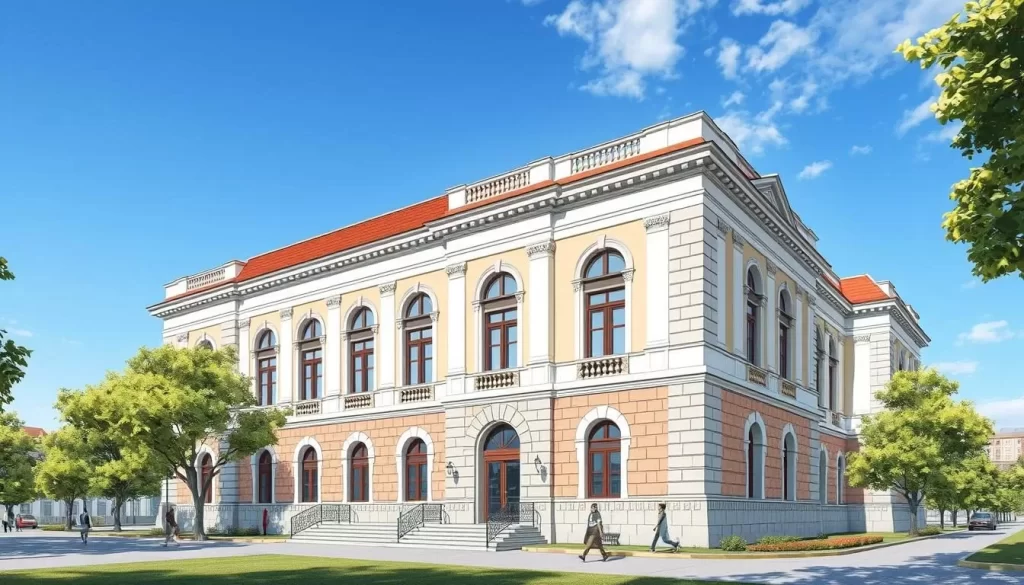
The Memorial Classroom
The Memorial Classroom within the First Kragujevac Gymnasium is a solemn tribute to the students and professors who lost their lives. This preserved classroom maintains its original appearance from that fateful day, creating a powerful time capsule. Personal belongings, school materials, and photographs of the victims are displayed, transforming abstract historical facts into a deeply human story. The classroom is located near the Šumarice Memorial Park, a significant historical site in Kragujevac, and is often visited as part of a tour that includes the museum in Kragujevac.
- The Memorial Classroom serves as a poignant reminder of the tragic events that unfolded on October 21, 1941, during the Kragujevac Massacre.
- Guided tours provide detailed accounts of individual students and teachers who were lost, ensuring their stories are not forgotten.
Religious Heritage: Churches and Monasteries
As you explore Kragujevac, you’ll discover a wealth of religious heritage, including historic churches and monasteries that showcase the city’s rich spiritual history. The city’s religious sites are not only significant to the local community but also offer visitors a glimpse into Serbia’s cultural and historical heritage.
The Old Church and Assembly
The Old Church in Kragujevac is a notable historical landmark that has played a significant role in the city’s past. This church is closely tied to the city’s history and has been a place of gathering for the community.

Cathedral Church
The Cathedral Church is another significant religious site in Kragujevac, reflecting the city’s architectural and spiritual heritage. This church is an important place of worship and a testament to the city’s history.
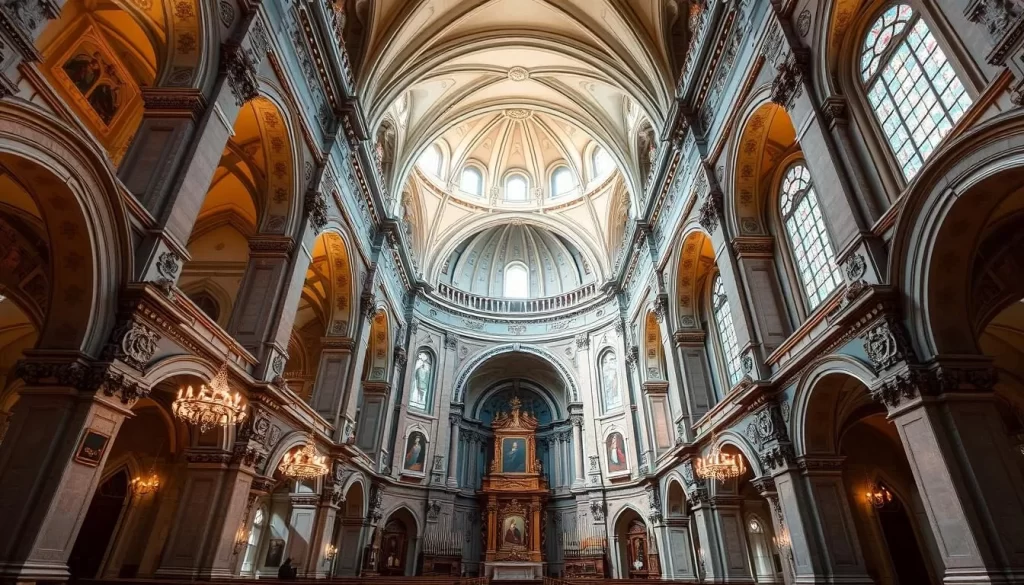
Drača Monastery
Just 10 kilometers from Kragujevac, the Drača Monastery offers a peaceful retreat into Serbia’s spiritual heritage. Established in the 16th century, this monastery features a church and monastic buildings that were refurbished in the 1700s. It’s a significant visit for those interested in history and religious heritage.
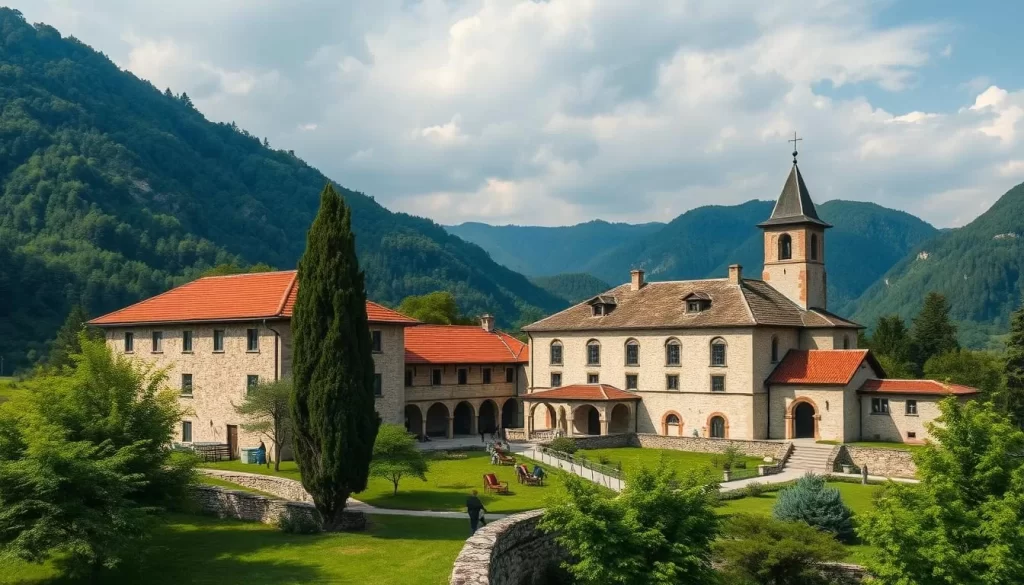
Kragujevac, Serbia: Best Things to Do for History Buffs
For those fascinated by the past, Kragujevac presents a unique opportunity to delve into Serbia’s rich historical heritage. The city is home to numerous historical landmarks and cultural institutions that offer a glimpse into its complex history.
Amidžin Palace
Amidžin Palace is one of the seven branches of the National Museum in Kragujevac.
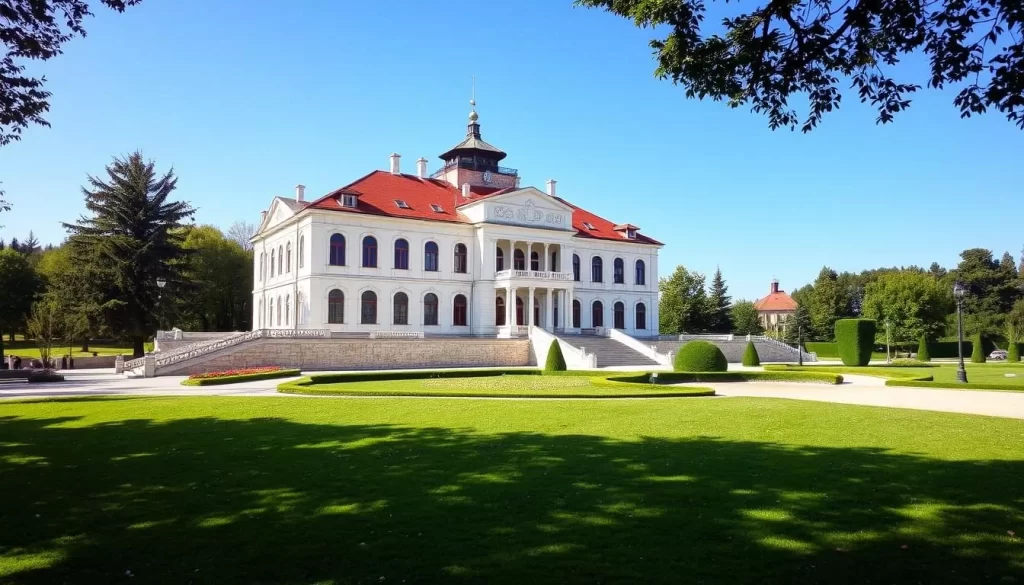
The palace is part of a larger cultural complex that showcases the city’s rich history and cultural significance.
National Museum Branches
The National Museum in Kragujevac operates through seven distinct branches, each focusing on different aspects of the region’s cultural and historical heritage.
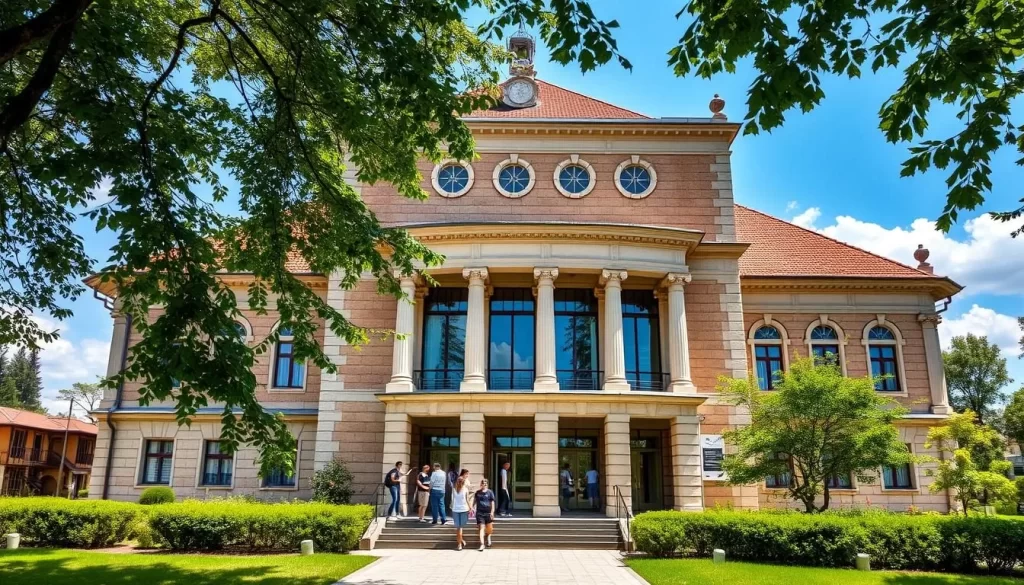
The museum’s collection includes over 1,000 artworks, 10,000 archaeological artifacts, and extensive ethnographical collections, providing a comprehensive insight into the history of Kragujevac and the Šumadija region.
Cultural Attractions in Kragujevac
Visitors to Kragujevac can enjoy a variety of cultural experiences that bring the city’s heritage to life. The city is home to numerous attractions that showcase its rich history and artistic significance.
Knjaževsko-Srpski Teatar
The Knjaževsko-Srpski Teatar is a cultural landmark in Kragujevac, offering a range of performances that highlight the city’s cultural vibrancy. With a history dating back to its establishment, the theater continues to be a significant cultural institution. Its repertoire includes a diverse selection of plays, catering to a wide audience.

Nikola Koka Janković Legacy
The Nikola Koka Janković Legacy museum is dedicated to the renowned sculptor, showcasing over 1,700 pieces of his work. The museum provides insight into Janković’s creative process, with both finished bronze sculptures and plaster molds on display. Visitors can explore the artist’s contributions to Serbian cultural life.

Kragujevac’s cultural attractions, including the Knjaževsko-Srpski Teatar and the Nikola Koka Janković Legacy museum, offer a glimpse into the city’s rich cultural and art heritage. These institutions play a vital role in preserving and promoting the city’s history and artistic achievements.
Outdoor Recreation and Leisure
Beyond its historical landmarks, Kragujevac boasts numerous opportunities for outdoor recreation. You can enjoy the natural beauty of the area while engaging in various leisure activities.
Big or Upper Park
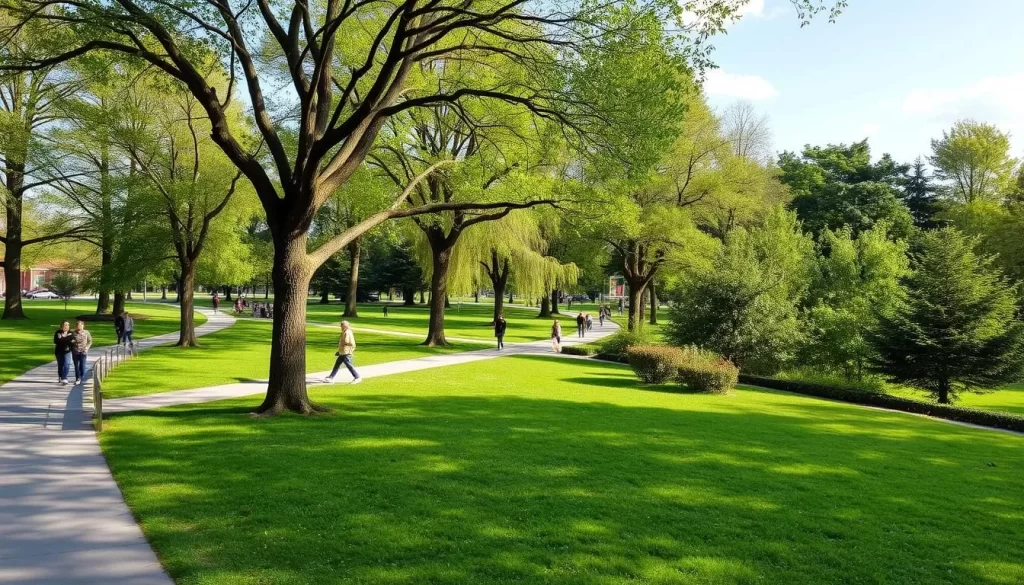
Big or Upper Park is a serene escape within the city, offering walking trails and lush green spaces ideal for family outings or relaxation.
Šumarice Lake
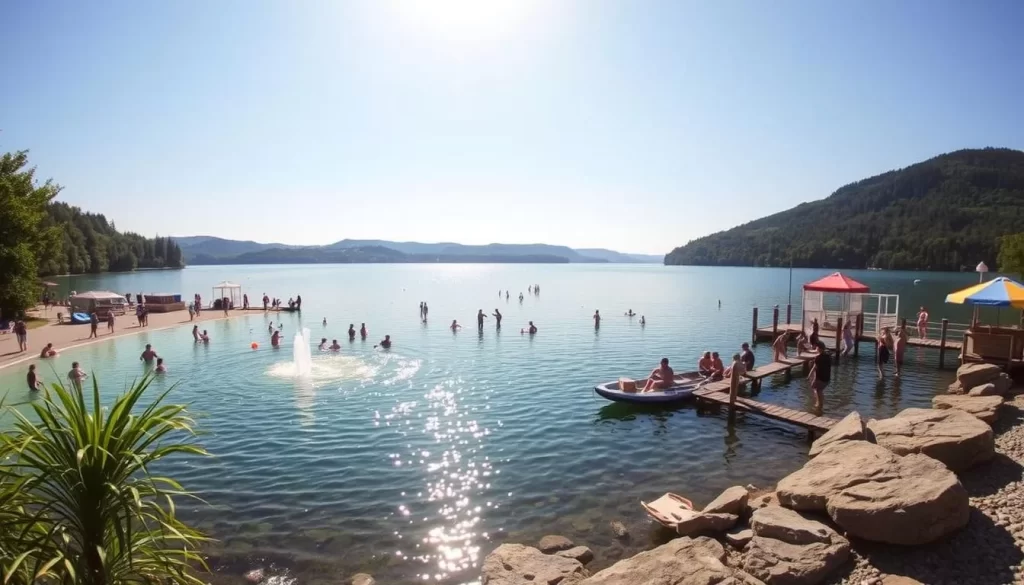
Šumarice Lake is a popular recreational spot, especially during summer. You can enjoy swimming, dine at lakeside restaurants, or experience the Adventure Park with activities like zip lines and obstacle courses, making it an ideal place for family fun in the area.
Local Cuisine and Shopping Experiences
As you explore Kragujevac, you’ll discover a blend of traditional Serbian cuisine and modern shopping experiences. The city offers a variety of places to eat and shop, making it an exciting destination for travelers.
Traditional Serbian Dishes to Try
When in Kragujevac, be sure to try some traditional Serbian dishes. The local food scene is rich in flavors, with popular dishes that you can enjoy at various restaurants. Sampling the local cuisine is a great way to experience the culture.
Kragujevac Plaza and Local Boutiques
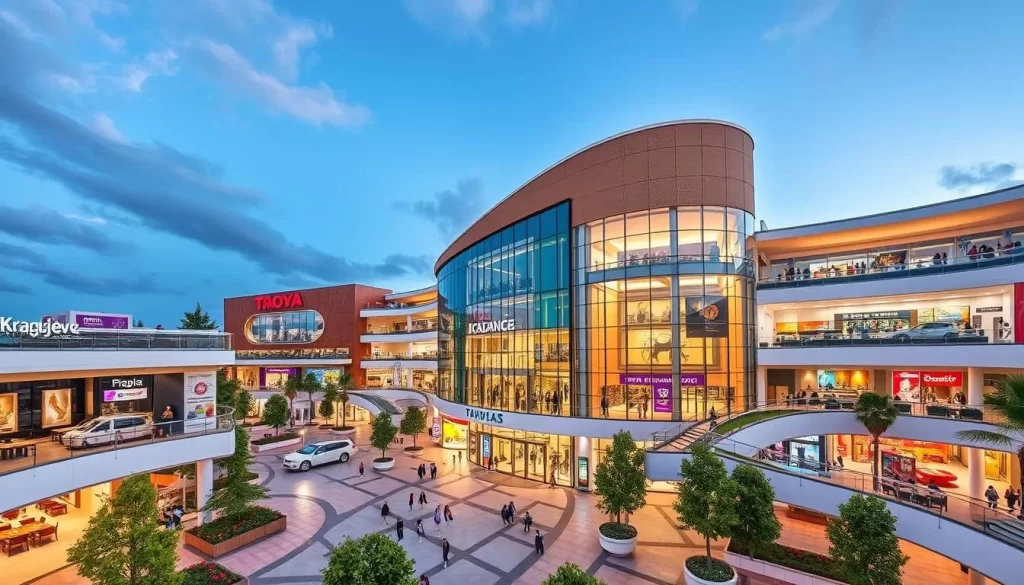
For shopping and entertainment, Kragujevac Plaza is a must-visit destination. With 100 stores, a food court, and various events, it’s an ideal place to spend the day. Additionally, the city’s local boutiques offer unique shopping experiences, allowing you to find one-of-a-kind souvenirs and gifts.
Conclusion: Making the Most of Your Visit to Kragujevac
Exploring Kragujevac reveals a city where the past and present converge, offering visitors a rich and diverse experience. To make the most of your visit, stay in the city center and explore its history, from Milosev Venac to memorial sites.
Enjoy local cuisine, Arsenal Fest, and unique boutiques. With many things to do in Kragujevac, a two-day stay is ideal. Consider exploring the wider Šumadija region, including Drača Monastery and local wineries, to fully experience exploring Kragujevac.
The above is subject to change.
Check back often to TRAVEL.COM for the latest travel tips and deals.
